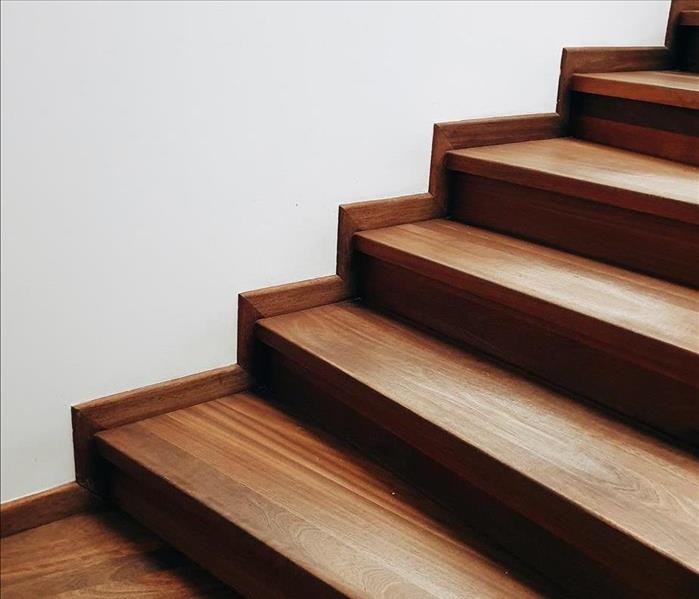4 Step Process to Dry Hardwood Floors?
11/2/2020 (Permalink)
Hardwood Drying Advice From The Water Damage Professionals
Have you recently had a flood or water damage and are now wondering if your hardwood floors will be able to be saved. This blog post will discuss how the SERVPRO professional dry hardwood floors and the signs that your hardwood floors have been damaged by water.
Due to the porous nature of wood, water is easily absorbed. What this means is that when your home undergoes a flood or water damage, you’ll want to remove all moisture by properly drying hardwood flooring as quickly as possible.
Signs That Hardwood Floors Have Water Damage
Before we get started on the signs to look out for, we think it is important that you know that the EPA states that mold growth can start within 48-72 hours when your floors (or walls) get wet.
With that being said, here are 3 signs to look out for:
1) The Hardwood flooring begins to buckle
2) The Hardwood flooring show water stains
3)The Hardwood sides begin to swell
Remember that even though you might not see clear signs of water damage to your hardwood flooring, that doesn't mean that water has not penetrated through the cracks. When water gets under hardwood flooring, it can be absorbed by the plywood subfloor underneath the hardwood.
4 Steps The Restoration Professionals Use To Dry Hardwood Flooring
When the professionals at SERVPRO get a call about water damage, they know that they need to act fast before mold growth or other more severe water damages occur to the home or business. Please keep in mind that every water damage is different and that the following steps are not in a particular order.
Step 1: Remove All Saturated Materials From The Floor
In most cases, as soon as the water damage professionals arrive at a water damage job, they will remove all soaked Rugs and furniture. They do this to prevent standing water and for avoiding future mold spores from growing in the cracks of the hardwood floor.
The water damaged rugs and furniture will be placed in a separate area for drying. In some cases, customers ask for specialty rug cleaning. Here at SERVPRO, Rug cleaning takes place at our warehouse.
Step 2: Use Water Extractors to Soak Up as Much of the Water as Possible
A basic wet vac may be able to do the job for small water damages, but in most cases, the water damage professionals will bring in their specialty water extractors that are linked to their trucks. They will continue to run their water extractors over the floor until water is no longer being sucked up. All the water from a customer's water damage will be taken with the restoration professionals and then properly discarded.
Step 3: Perform a Moisture Tests
The professionals will use a moisture meter to see how much remaining moisture is in the hardwood. In almost every scenario, the moisture meter will show signs of moisture after a day or two. Every other day a professional will come out and check to see how the hardwood is drying. They will be recording the temperature and the humidity levels during every visit as well.
Step 4: Use Dehumidifiers and Air movers
The use of dehumidifiers and air movers ensures that the hardwood will be dry in time to avoid possible mold growth. The most important thing to remember is never to wait for the flooring to dry naturally. It can take weeks for dry hardwood to occur naturally; left alone will most likely lead to more significant issues.
Even after the water extraction process occurs, the wood flooring may appear dry but remember that wood is very porous. To enhance the drying process, the professionals will strategically place a dehumidifier and air movers. Dehumidifiers and air movers work with each other. The air mover will move the water particles from the hardwood flooring into the air, and then the dehumidifier will suck up any moisture.
Final Thoughts
Even if your hardwood floor has been sealed and waxed, it will still be highly susceptible to water damage because these sealants are not designed to prevent massive amounts of moisture. In most cases, a waxed hardwood floor will only be able to protect against spills.
SERVPRO of North Fulton is available 24/7 for all of your water damage restoration needs. They will go the extra mile and be a mediator between you and your insurance company to ensure that you are appropriately compensated for your water damage.
Call us at (770) 992-2777





 24/7 Emergency Service
24/7 Emergency Service
